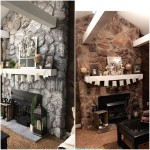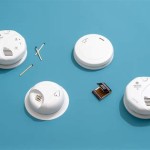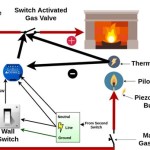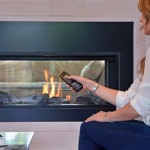Gas Fireplace Thermocouple Problems: A Comprehensive Guide
Gas fireplaces offer a convenient and aesthetically pleasing heating solution for many homes. However, like any gas-powered appliance, they rely on a complex system of components to function safely and efficiently. One of the most crucial components in a gas fireplace is the thermocouple. This small, yet vital, device acts as a safety mechanism, ensuring that gas flow is only permitted when the pilot light is actively burning. Problems with the thermocouple can lead to a variety of frustrating issues, ranging from the fireplace failing to ignite to shutting off unexpectedly.
Understanding the function of a thermocouple and the common problems associated with it is essential for homeowners seeking to maintain their gas fireplaces in optimal working condition. Diagnosing and, in some cases, rectifying thermocouple issues can save time, money, and potential safety hazards. This article delves into the role of the thermocouple in a gas fireplace, explains the various problems that can arise, and outlines troubleshooting steps and potential solutions.
The Role of the Thermocouple: A Detailed Explanation
The thermocouple, a small metal rod typically located near the pilot light, operates on a fundamental principle of thermodynamics. It consists of two dissimilar metal wires joined together at one end, forming a “hot junction.” This hot junction is positioned directly within the flame of the pilot light. When the pilot light is lit, the heat generated by the flame heats the hot junction of the thermocouple.
This heating process generates a small electrical current, measured in millivolts. The electrical current flows through the wires to the gas valve, which is the component responsible for controlling the flow of gas to the main burner. The electrical current energizes a small electromagnet within the gas valve, effectively holding the valve open. As long as the pilot light remains lit and the thermocouple continues to produce a sufficient electrical current, the gas valve remains open, allowing gas to flow to the main burner when the fireplace is turned on.
If the pilot light extinguishes, the hot junction of the thermocouple cools down. As it cools, the electrical current generated decreases and eventually ceases. Consequently, the electromagnet within the gas valve de-energizes, causing the valve to close and shutting off the gas supply. This crucial safety feature prevents the uncontrolled release of gas into the home, mitigating the risk of gas leaks and potential explosions. Without a properly functioning thermocouple, the entire safety system of the gas fireplace is compromised.
The specific type of thermocouple used in a gas fireplace can vary depending on the age and model of the appliance. However, the fundamental principle of operation remains the same: generating an electrical current in response to heat to control the gas valve. Some modern gas fireplaces utilize a thermopile, which is a series of thermocouples connected together to generate a higher voltage. Thermopiles are often used in conjunction with electronic ignition systems and remote controls.
Common Thermocouple Problems and Their Symptoms
Several issues can affect the performance of a gas fireplace thermocouple, leading to operational problems. Identifying these problems early on can prevent further damage and ensure the continued safe operation of the fireplace.
Dirty Thermocouple: Accumulation of soot, dust, and debris on the thermocouple is one of the most frequent causes of malfunction. These deposits act as insulators, reducing the amount of heat that reaches the hot junction and consequently decreasing the electrical current generated. Symptoms of a dirty thermocouple include difficulty lighting the pilot light, the pilot light extinguishing shortly after being lit, or the main burner failing to ignite even when the pilot light is lit.
Bent or Misaligned Thermocouple: If the thermocouple is bent or misaligned, it may not be positioned correctly within the pilot light flame. This improper positioning can prevent the hot junction from receiving sufficient heat, leading to a weak electrical current. A misaligned thermocouple can result from accidental bumping or movement during cleaning or maintenance of the fireplace. The primary symptom associated with this issue is the pilot light going out shortly after the control knob is released.
Loose Connections: The electrical connections between the thermocouple and the gas valve must be secure and free from corrosion. Loose connections can interrupt the flow of electrical current, preventing the gas valve from staying open. Corrosion can also impede the flow of electricity. Symptoms of loose connections or corrosion include intermittent pilot light problems, flickering flames, and the main burner shutting off unexpectedly.
Weak or Failing Thermocouple: Over time, the thermocouple itself can weaken or fail completely. This is a natural consequence of repeated heating and cooling cycles. A weak thermocouple may still generate some electrical current, but not enough to hold the gas valve open consistently. This can manifest as the pilot light staying lit for a short period and then extinguishing, or the main burner operating intermittently. A completely failed thermocouple will not generate any electrical current, preventing the pilot light from lighting at all.
Gas Valve Issues: While the problem might manifest symptomatically like a thermocouple issue, the gas valve itself could be faulty. The electromagnet within the gas valve might be weak or damaged, preventing it from being held open even with sufficient current from the thermocouple. If the gas valve is malfunctioning, even a perfectly functioning thermocouple will not allow the fireplace to operate correctly. Symptoms include the pilot light staying lit but the main burner failing to ignite, or the pilot light extinguishing even when the thermocouple is generating sufficient voltage.
Troubleshooting and Solutions for Thermocouple Problems
When a gas fireplace exhibits problems associated with the thermocouple, a systematic approach to troubleshooting is necessary to identify the root cause and implement the appropriate solution. The following steps can help diagnose and resolve common thermocouple issues.
Visual Inspection: Begin by visually inspecting the thermocouple and its surrounding area. Look for any signs of soot or debris buildup on the thermocouple. Check for any obvious bends or misalignments. Ensure that the thermocouple is positioned directly within the pilot light flame. Examine the electrical connections between the thermocouple and the gas valve for looseness or corrosion.
Cleaning the Thermocouple: If the thermocouple appears dirty, carefully clean it with a fine-grade steel wool or emery cloth. Gently rub the surface of the thermocouple to remove any accumulated soot or debris. Avoid using harsh chemicals or abrasive cleaners, as these can damage the thermocouple. After cleaning, visually inspect the thermocouple again to ensure that all deposits have been removed.
Adjusting Thermocouple Position: If the thermocouple is bent or misaligned, carefully straighten it or reposition it so that the hot junction is directly within the pilot light flame. Use caution to avoid damaging the thermocouple during this process. Ensure that the flame is making direct contact with the tip of the thermocouple.
Tightening Connections: If the electrical connections between the thermocouple and the gas valve are loose, carefully tighten them. If corrosion is present, clean the connections with a wire brush or electrical contact cleaner. Ensure that the connections are secure and free from any obstructions.
Testing Thermocouple Output: A multimeter can be used to measure the electrical output of the thermocouple. With the pilot light lit, connect the multimeter to the thermocouple terminals. The multimeter should display a voltage reading within the specified range for the thermocouple (typically around 25-30 millivolts). If the voltage reading is significantly lower than the specified range, the thermocouple is likely weak or failing and needs replacing.
Replacing the Thermocouple: If cleaning, adjusting, and tightening connections do not resolve the problem, and the voltage output is low, the thermocouple likely needs to be replaced. Thermocouples are relatively inexpensive and can be purchased at most hardware or fireplace supply stores. When replacing the thermocouple, ensure that you purchase the correct type for your gas fireplace model. Follow the manufacturer's instructions for installation. Disconnect the gas supply before attempting any repairs or replacements.
Professional Assistance: If you are not comfortable performing these troubleshooting steps or if the problem persists after attempting these solutions, it is recommended to consult with a qualified gas fireplace technician. A professional technician has the expertise and tools to diagnose and repair more complex issues, including problems with the gas valve or other components of the fireplace system.
Regular maintenance of a gas fireplace, including cleaning the thermocouple and checking the connections, can help prevent many common problems. It is also important to follow the manufacturer's recommendations for service intervals and inspections. A well-maintained gas fireplace will provide reliable and safe heating for years to come.

Gas Fireplace Won T Stay Lit Magic Touch Mechanical

Gas Fireplace Won T Stay Lit Magic Touch Mechanical

Fireplace Won T Stay Lit This Is How You Fix It

Gas Fireplace Missing Thermopile

Thermo Everything You Need To Know And Then Some

How A Pilot Light Works Www Mygasfireplacerepair Com

How To Replace A Thermocouple The Home Depot

Gas Fireplace Keeps Shutting Off Here S What You Can Do
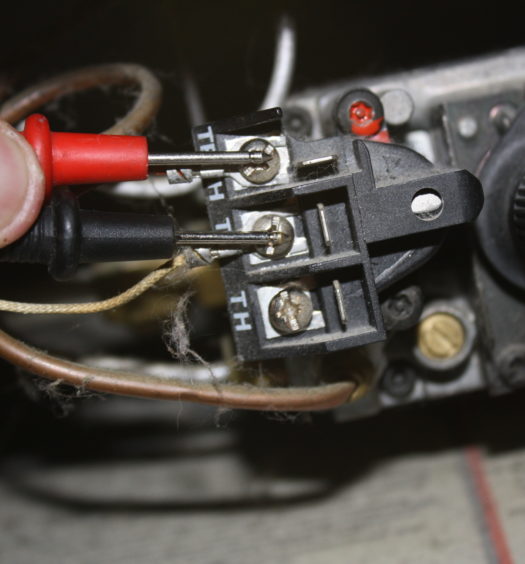
How To Test Your Thermopile Www Mygasfireplacerepair Com

Diy Gas Fireplace Won T Light How To Clean Your Thermopile And Thermocouple
Related Posts

